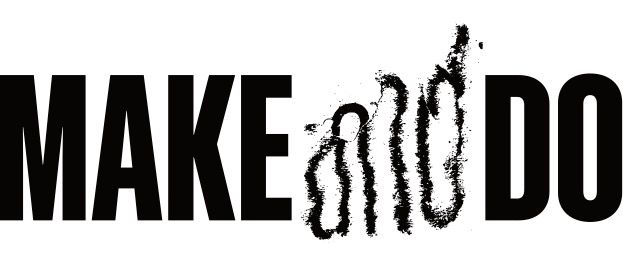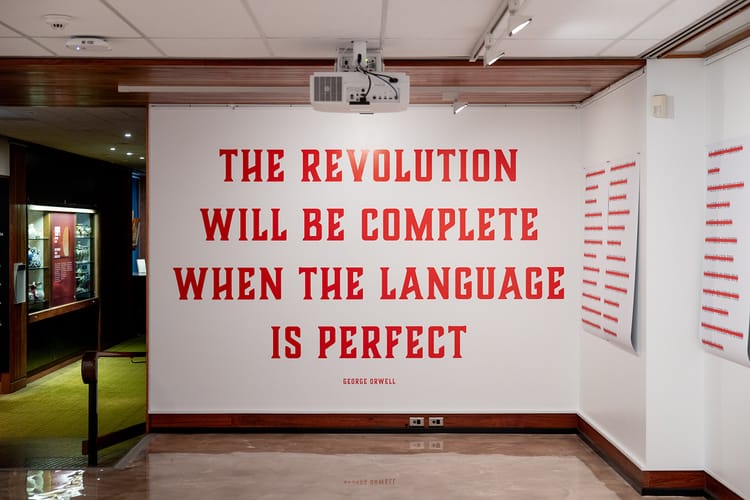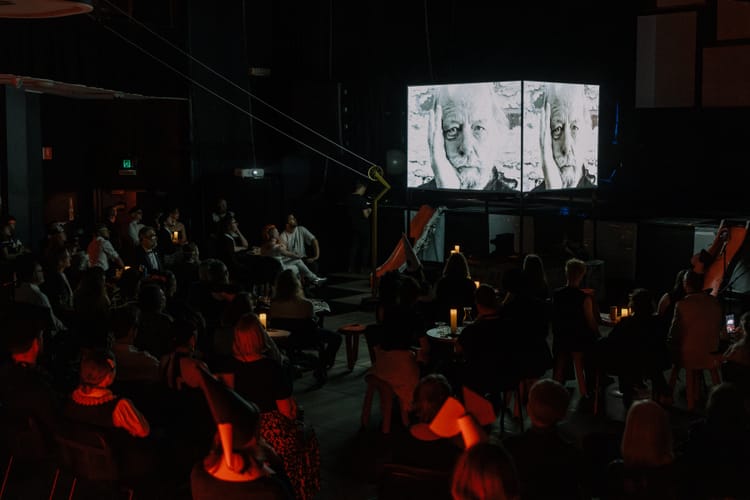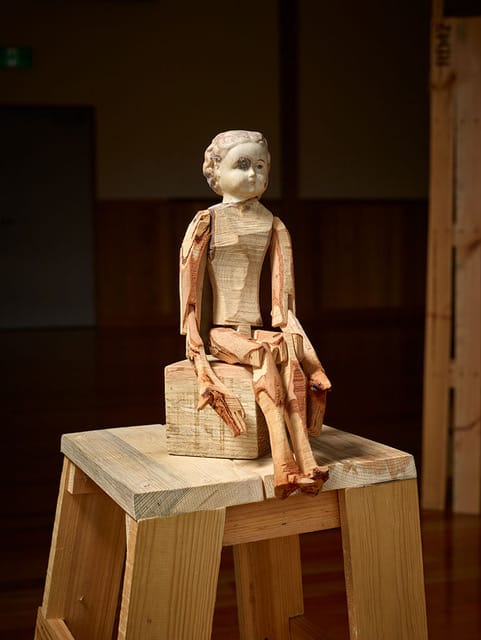Have you ever been experienced?
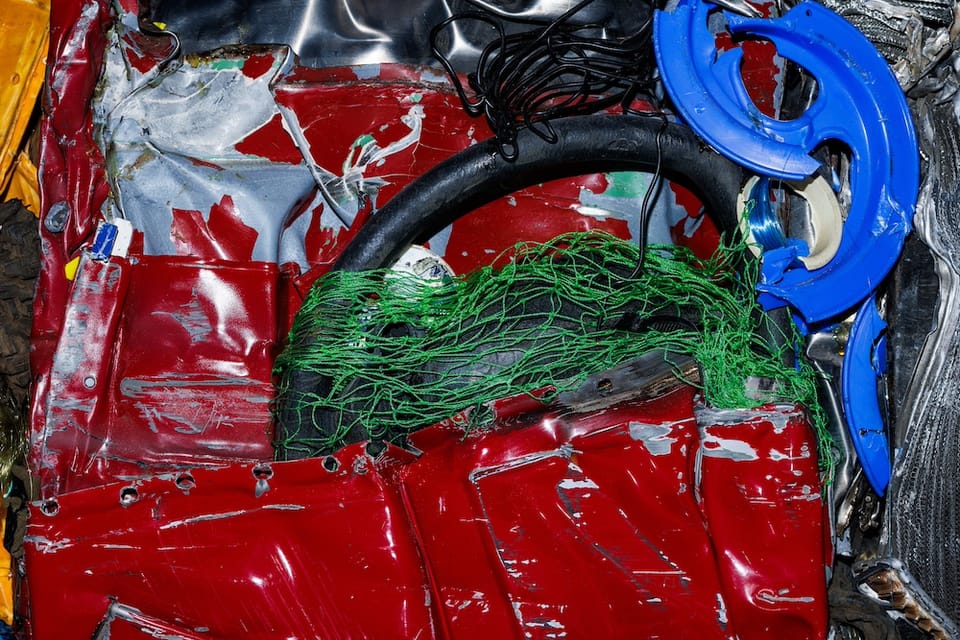
Namedropping is something of a gap-filler show in that it isn’t a contemporary art mega-star of any kind, but has loads of Big, even Iconic, Names in it. Some of these works of art are actual works of art, and some of them are part of the Mona collection, gathered up for this show,[1] and some of them are not art works at all, but, well, collectibles.
There is, as an instance, a framed copy of ‘Are You Experienced’ by The Jimi Hendrix Experience and it has the autographs of The Experience right there in the frame. That’s not an art work by any stretch of the imagination, but it is interesting, particularly as you’ve not been able to get Jimi Hendrix to sign anything since 1970; that’s a 50 plus year old bit of paper there, under glass, on a wall in a privately owned art museum about as far from Seattle (where Jimi hailed from) as you might get. I found this weird. I find autographs deeply weird. The artistry is on the record, which is mounted in glass and will not be played, if there’s even a record in there. I don’t know.
On another bit of paper are the lyrics to Bowie’s ‘Starman’. I guess process is interesting. Is a lyric on a page process in action? Bowie touched it. Bowie IS great. ‘Starman’ is a fabulous song. But this is not not the song. I can listen to the song right now.
It reminded me of something: how you can now purchase a record, and the record comes with a small bit of paper, which has a download code on it. You can avoid playing that record entirely, and keep the record ‘mint’ which increases its resale value and effectively makes the object more valuable than the art for which it is a vessel[2]. The object is a collectable.
One of the things I think is incredible about music is its affordable art.
A lot of art is in an edition of one: one person can own it and enjoy it.[3] Music and books can come in multiple editions, so lots of people can own and enjoy those. Turning music into collectable objects is an interesting moment in the history of art, ownership and value. Of course, I can still get ‘Are You Experienced’, but if I wanted an original pressing in mono from 1967, I’d need a fair bit of coin. Some people do have that coin and that trade exists (I just went down a Discogs/eBay rabbit hole and prices were all over the shop).
It's fascinating to see a collectible, or ephemera, like this, in the context of a museum like this.
I have noticed that there’s been a growth in selling this kind of thing though; there’s an organisation in New York (where else?) called Boo Hooray that collects ephemera, has exhibitions of it, places it archives and, crucially, sells it. Boo Hooray can sell about anything, from flyers for New York Hardcore bands of the 80s, to advertisements for underground gay clubs[4], faded chap books, invitations to film screenings, women’s rights badges from the Seventies and so on. You can see there is both value and interest in such items. But I’m a bit amazed by the idea of a market for these things that can, in some unusual cases, get to as much as four figures. If you go over to the world of sports memorabilia, things can get even more pricey. Now, some of this kind of material does have some kind of cultural and historical value without a doubt – when you look at old theatre flyers, in some cases these are records of events and cultural production. Records of now-gentrified gay clubs are kind of important for history. Selling them, however, is another angle. These items are, however, cheaper than a lot of art, and certainly less expensive than art from the same era and even subculture. I could probably get something from a Boo Hooray catalogue but an actual print of Diane Arbus’ Identical Twins, Roselle, New Jersey, 1967 is well out of my reach[5].
The value of autographs eludes me somewhat, but it does indicate the existence of fan culture and the idea of authenticity. Picasso allegedly undertook, later in life, a method of ‘paying’ for things – like a meal at restaurant – by drawing something on a napkin and signing it. The valuable part there is without a doubt the signature, noting that the work, however slapdash, is an authentic Picasso, and that by that stage, Picasso was a brand.
That items of memorabilia are being shown in a museum alongside works of art, then, is interesting when you consider things like value, authenticity, art markets and all of the above[6]. Given the exhibition is called Namedropping, I guess this is exactly what I feel I’m meant to consider.
It goes further though, of course, because this suggests I am being led to a particular conclusion about this art and these items of memorabilia.
There’s a kind of exhibition Mona does, and, I will note, does pretty well, where questions about the nature of art, and what art is for, and why humans make art, are asked. I think Namedropping is another part of this now very extended investigation, and while it’s annoyed me in the past – largely because I consider that there are multiple reasons why people make art, and that it changes radically over cultures and time, to such an extent that I’d see any blanket answer for ‘why do humans make art’ as deeply reductive. Even if the answer is a good answer, it’s never the only answer.
I do not buy the idea that we make art for solely for ‘status’. I think some people buy art to acquire status, but there is too much art that you cannot buy or sell with much ease, and the existence of mass reproduction has made some art easy to acquire, and even if you make a hard to own version of it, this is only a footnote to the art itself. I question what the nature of the status is too: is it that you can afford the art? Am I admiring your bank account or your taste? If I do not find much in an art work that interests me or piques my curiosity in some way, it’s price tag does not make up for that.
Music as art that is readily available is more interesting to me. For example, its availability and relatively low cost means that you can take a song like ‘Are You Experienced’, and make a radically different version of it. I could also suggest that the more available art is, the more influence or impact that a particular work of art might have. Music has at times had incredible cultural and social impact, because of its popularity: lots of people heard it. And of course, art that is about the act of copying and being popular does exist.
Namedropping, the exhibition, is different to other exhibitions in the established lineage of Mona’s ‘What Is Art; What Is It For’ oeuvre. It’s asking if memorabilia can be seen as art, or on the same level as art: asking why or why not it might be seen as art. It also begins exploring ideas of value and authenticity. Which is well worth considering in a complex art market, where art sells for unaffordable (and often arbitrary) prices, in a world where I can still get a copy of ‘Are You Experienced’ and enjoy it for the great record it is, and which I can own, if I need to, for not very much money at all. Moreover, I do not need to even own ‘Are You Experienced’ to experience it.[7]
I have now seen a number of Mona in-house shows that try and do interesting things with the very diasporic Mona collection and these are the shows that in some ways have come to interest me the most. This is because they attempt a thesis of sorts, and because Mona uses this luxury of ownership to ask questions about value and ownership. The big idea of Namedropping that Mona suggests is “ART = STATUS”.
The problem with that idea though, for me, is that I don’t just disagree.
It’s that I don’t give a fuck why we make art.
